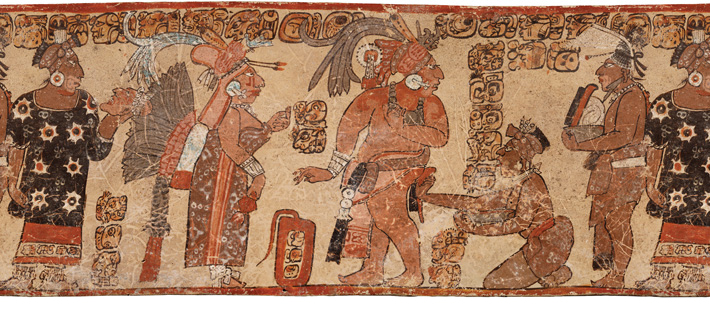Idol of the Painted Temple
On Peru’s central coast, an ornately carved totem was venerated across centuries of upheaval and conquest
July/August 2020
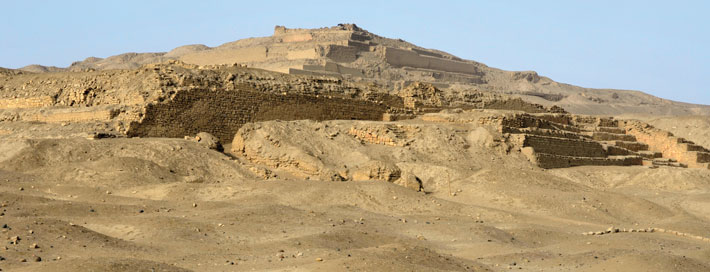
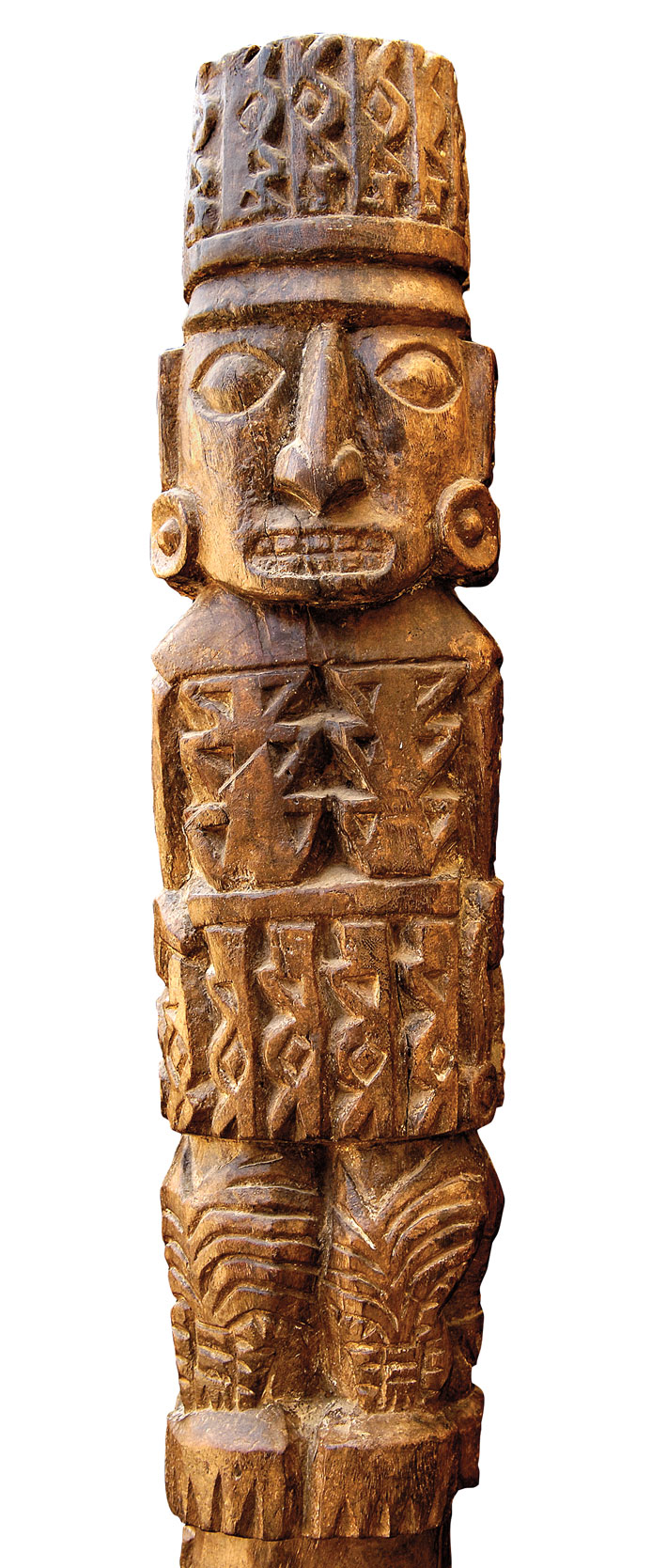
After defeating the forces of Atahualpa, the last Inca emperor, in 1533, Francisco Pizarro dispatched his brother Hernando to a vast religious center on Peru’s central coast called Pachacamac. Just south of modern-day Lima, Pachacamac spanned nearly 1,500 acres and had, by that time, been a place of worship for at least 1,000 years. There, in front of an assembled crowd of locals and priests, Hernando Pizarro is said to have smashed an idol representing one of Pachacamac’s primary deities. The Spanish had introduced a sweeping proscription against indigenous religious practice and forced the local population to convert to Christianity. Pachacamac was soon abandoned, ending a centuries-long tradition of venerating cults at the site under the rule of elites of multiple Andean cultures. These various cultures, evidence suggests, shared spiritual ideas and perhaps even gods. Pachacamac is, in fact, an Inca name for an oracle that may have been worshipped in some form for hundreds of years before the Inca Empire conquered the area in the late fifteenth century.
Just over 400 years after Pizarro’s raid on Pachacamac, in 1938, avocational archaeologist Albert Giesecke discovered a wooden sculpture roughly eight feet tall and five inches in diameter hidden among rubble from what was once the north atrium of Pachacamac’s Painted Temple. The pyramidal Painted Temple is believed to have first been built in the eighth and ninth centuries A.D. and then to have been expanded during the Andean Late Intermediate period (ca. A.D. 1000–1470), when Pachacamac was home to a chieftainship and a deity both known as Ychsma. An American polymath trained in economics who first traveled to Peru in 1909 as an adviser to the Peruvian government, Giesecke became an influential public servant and a champion of the country’s pre-Columbian heritage. With information that had been provided to him by farmers in the area, Giesecke tipped off explorer Hiram Bingham to the location of ruins high above a gorge in the southern highlands—a site now known as Machu Picchu.
Since its discovery, the sculpture from the Painted Temple has been called the Pachacamac Idol and has been the subject of intense interest—and controversy—among scholars of the Andean world. Many have speculated as to whether this idol could be the very artifact Hernando Pizarro is said to have destroyed.
Also in this Issue:
Advertisement
IN THIS ISSUE
Features
From Head to Toe in the Ancient Maya World
A Silk Road Renaissance
Idol of the Painted Temple
Letter from Normandy
Digs & Discoveries
The Emperor of Stones
Off the Grid
Ice Age Ice Box
Sticking Its Neck Out
ID'ing England's First Nun
Play Ball!
History in Ice
Roman River Cruiser
Prized Polo...Donkeys?
Twisted Neanderthal Tech
Around the World
Prehistoric Floridian fishermen, Hannibal’s army in Spain, Paleolithic mystery spheres, and a lost Maya city
Artifact
A Roman soldier’s gift to the gods
Advertisement

Recent Issues
-
 May/June 2024
May/June 2024
-
 March/April 2024
March/April 2024
-
 January/February 2024
January/February 2024
-
 November/December 2023
November/December 2023
-
 September/October 2023
September/October 2023
-
 July/August 2023
July/August 2023
-
 May/June 2023
May/June 2023
-
 March/April 2023
March/April 2023
-
 January/February 2023
January/February 2023
-
 November/December 2022
November/December 2022
-
 September/October 2022
September/October 2022
-
 July/August 2022
July/August 2022
-
 May/June 2022
May/June 2022
-
 March/April 2022
March/April 2022
-
 January/February 2022
January/February 2022
-
 November/December 2021
November/December 2021
-
 September/October 2021
September/October 2021
-
 July/August 2021
July/August 2021
-
 May/June 2021
May/June 2021
-
 March/April 2021
March/April 2021
-
 January/February 2021
January/February 2021
-
 November/December 2020
November/December 2020
-
 September/October 2020
September/October 2020
-
 July/August 2020
July/August 2020
-
 May/June 2020
May/June 2020
-
 March/April 2020
March/April 2020
-
 January/February 2020
January/February 2020
-
 November/December 2019
November/December 2019
-
 September/October 2019
September/October 2019
-
 July/August 2019
July/August 2019
-
 May/June 2019
May/June 2019
-
 March/April 2019
March/April 2019
-
 January/February 2019
January/February 2019
-
 November/December 2018
November/December 2018
-
 September/October 2018
September/October 2018
-
 July/August 2018
July/August 2018
-
 May/June 2018
May/June 2018
-
 March/April 2018
March/April 2018
-
 January/February 2018
January/February 2018
-
 November/December 2017
November/December 2017
-
 September/October 2017
September/October 2017
-
 July/August 2017
July/August 2017
-
 May/June 2017
May/June 2017
-
 March/April 2017
March/April 2017
-
 January/February 2017
January/February 2017
-
 November/December 2016
November/December 2016
-
 September/October 2016
September/October 2016
-
 July/August 2016
July/August 2016
-
 May/June 2016
May/June 2016
-
 March/April 2016
March/April 2016
-
 January/February 2016
January/February 2016
-
 November/December 2015
November/December 2015
-
 September/October 2015
September/October 2015
-
 July/August 2015
July/August 2015
-
 May/June 2015
May/June 2015
-
 March/April 2015
March/April 2015
-
 January/February 2015
January/February 2015
-
 November/December 2014
November/December 2014
-
 September/October 2014
September/October 2014
-
 July/August 2014
July/August 2014
-
 May/June 2014
May/June 2014
-
 March/April 2014
March/April 2014
-
 January/February 2014
January/February 2014
-
 November/December 2013
November/December 2013
-
 September/October 2013
September/October 2013
-
 July/August 2013
July/August 2013
-
 May/June 2013
May/June 2013
-
 March/April 2013
March/April 2013
-
 January/February 2013
January/February 2013
-
 November/December 2012
November/December 2012
-
 September/October 2012
September/October 2012
-
 July/August 2012
July/August 2012
-
 May/June 2012
May/June 2012
-
 March/April 2012
March/April 2012
-
 January/February 2012
January/February 2012
-
 November/December 2011
November/December 2011
-
 September/October 2011
September/October 2011
-
 July/August 2011
July/August 2011
-
 May/June 2011
May/June 2011
-
 March/April 2011
March/April 2011
-
 January/February 2011
January/February 2011
Advertisement




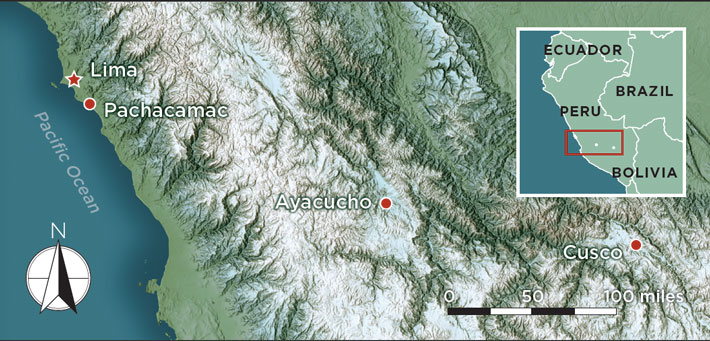
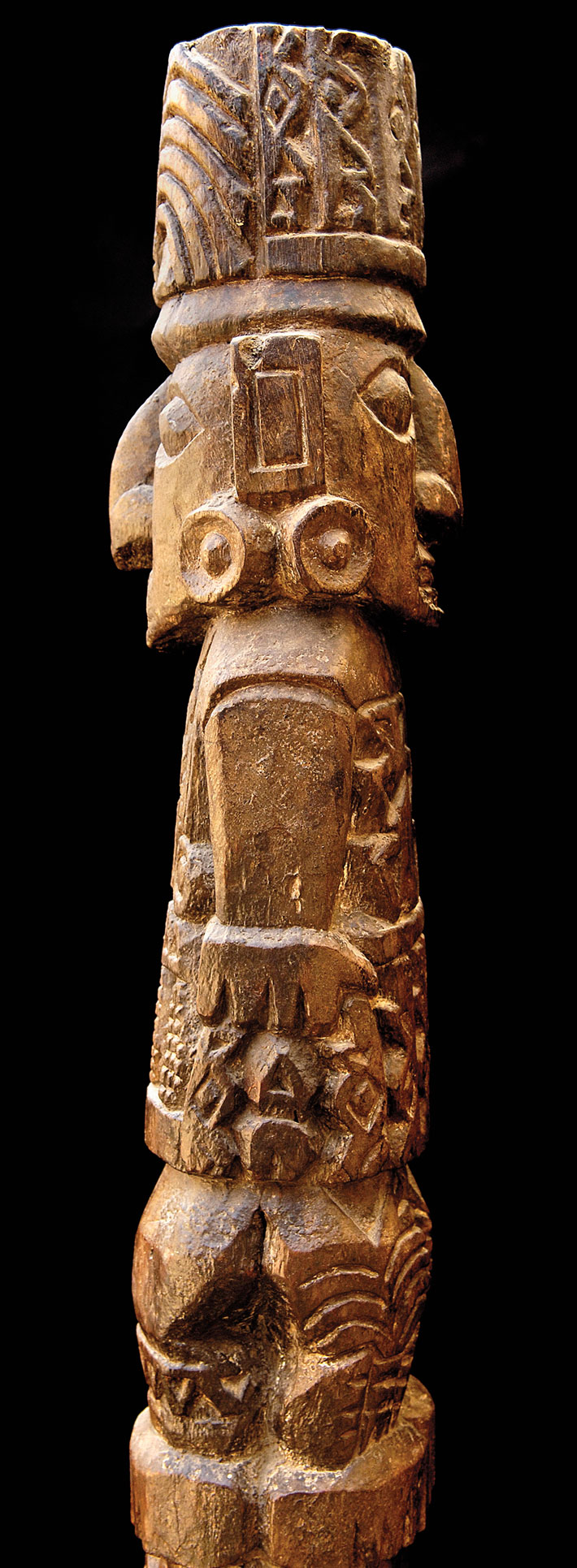 Other scholars argue that the transformation that eventually led to the construction of Pachacamac’s temples and its rise as a religious center had taken place centuries before, in the Early Intermediate period (ca. 200 B.C.–A.D. 650), and that the site was already at that point home to a state-level society with a stratified class system, including military and priestly castes, and had a well-developed material culture of its own. This society, in turn, may have adopted cultural practices from, traded with, or become a client state of Wari. While direct evidence of Wari political or military control at Pachacamac is lacking, numerous Wari-influenced burials, ceramics, murals, and textiles have been discovered at the site, particularly in and around the vicinity of the Painted Temple.
Other scholars argue that the transformation that eventually led to the construction of Pachacamac’s temples and its rise as a religious center had taken place centuries before, in the Early Intermediate period (ca. 200 B.C.–A.D. 650), and that the site was already at that point home to a state-level society with a stratified class system, including military and priestly castes, and had a well-developed material culture of its own. This society, in turn, may have adopted cultural practices from, traded with, or become a client state of Wari. While direct evidence of Wari political or military control at Pachacamac is lacking, numerous Wari-influenced burials, ceramics, murals, and textiles have been discovered at the site, particularly in and around the vicinity of the Painted Temple.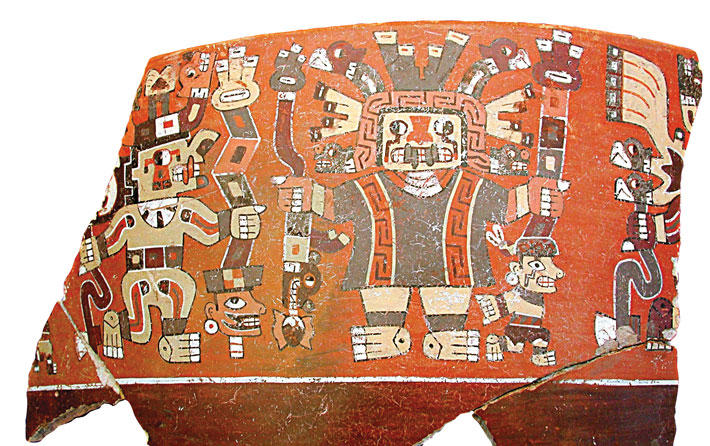 While scholars cannot say for certain what the Pachacamac Idol was called by those who venerated it, it does not appear to depict one of the primary Wari deities. Wari are thought to have worshipped a trio of gods headed by the Staff God, a humanlike figure typically portrayed holding a staff in each hand, with solar rays radiating from around his face. In many instances, he is shown accompanied by two attendants who also hold staffs. Isbell says that if the Pachacamac Idol does represent a Wari deity, it does so in a unique manner. “If it were dead-on Wari style, it would show a recognizable figure from that pantheon—and it doesn’t,” he says. “On the other hand, certain decorative elements it does have, such as pendent rays and feline heads, are very reminiscent of the rays that come off the face of the Staff God.”
While scholars cannot say for certain what the Pachacamac Idol was called by those who venerated it, it does not appear to depict one of the primary Wari deities. Wari are thought to have worshipped a trio of gods headed by the Staff God, a humanlike figure typically portrayed holding a staff in each hand, with solar rays radiating from around his face. In many instances, he is shown accompanied by two attendants who also hold staffs. Isbell says that if the Pachacamac Idol does represent a Wari deity, it does so in a unique manner. “If it were dead-on Wari style, it would show a recognizable figure from that pantheon—and it doesn’t,” he says. “On the other hand, certain decorative elements it does have, such as pendent rays and feline heads, are very reminiscent of the rays that come off the face of the Staff God.”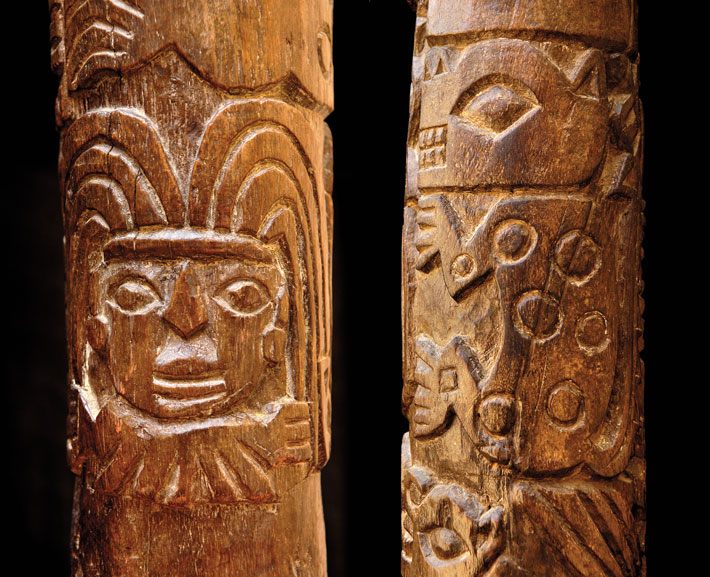
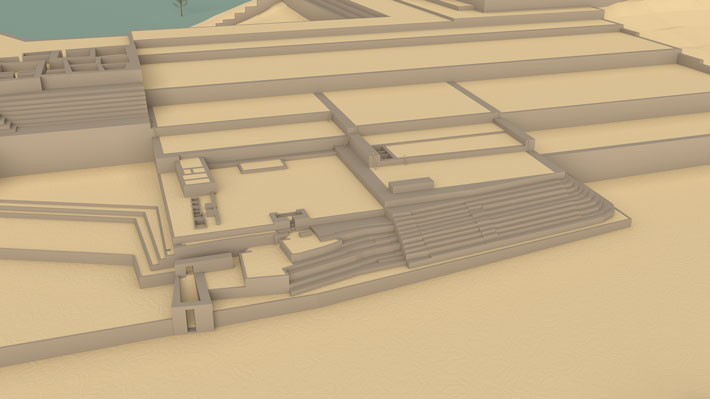 The idol may have taken on a meaning recognizable to multiple Andean cultures during the Middle Horizon period (ca. A.D. 650–1000) through its style, color, and decoration, or through a shared understanding of spiritual or religious symbols. It probably endured as an object of worship because new rulers who took control at Pachacamac, such as the Inca, tended to tolerate existing cults. “The Inca were interested in integrating local and regional cults into their own pantheon and sacred net,” says Eeckhout. “It was part of their conquest strategy, but also their belief in the reality of the powers of those entities.” Centuries before, Wari also appear not only to have allowed the people at Pachacamac to continue to worship their local deities, but those gods—including the deity represented on the Pachacamac Idol—may even have been incorporated as lesser members of the Wari pantheon.
The idol may have taken on a meaning recognizable to multiple Andean cultures during the Middle Horizon period (ca. A.D. 650–1000) through its style, color, and decoration, or through a shared understanding of spiritual or religious symbols. It probably endured as an object of worship because new rulers who took control at Pachacamac, such as the Inca, tended to tolerate existing cults. “The Inca were interested in integrating local and regional cults into their own pantheon and sacred net,” says Eeckhout. “It was part of their conquest strategy, but also their belief in the reality of the powers of those entities.” Centuries before, Wari also appear not only to have allowed the people at Pachacamac to continue to worship their local deities, but those gods—including the deity represented on the Pachacamac Idol—may even have been incorporated as lesser members of the Wari pantheon.